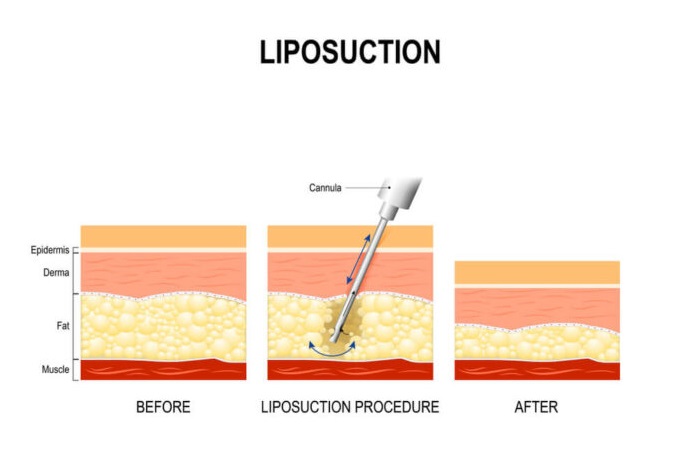
Liposuction is a cosmetic surgery that surgically removes fat from the body using a suction device known as a cannula. This procedure has been used for years to create slimmer figures and shapelier contours. Common areas for fat removal include the abdomen, thighs, lower back, hips, chest, and chin. Dr. Clinton Webster offers traditional liposuction, as well as laser liposuction and other alternatives depending on the patient’s needs.
The incision used for liposuction is relatively small, and the recovery is short. It is important to note that liposuction should not be used as a replacement for a healthy weight loss plan. It is a body contouring procedure that accentuates and compliments areas that are resistant to diet and exercise.
Tumescent liposuction is a common approach used by surgeons. It is a suction-assisted (SAL) form of lipo that first injects a liquid agent into the area that is to be treated. The liquid agent includes saline, Lidocaine (a numbing agent) and Epinephrine (a medication that controls bleeding). A cannula is then inserted and passed through the fat deposits, suctioning them out. An attached power-aided motor allows the surgeon to control the speed of the fat removal, which can be as great as a few pounds or as little as several ounces.
Ultrasound-assisted liposuction (known as “ultrasonic”) is a technique used on areas where a greater amount of dense fat resides. It’s a dual process using ultrasound and suction. First, ultrasound waves transmit energy through a special device aimed to help loosen and melt the fat. This liquid is then suctioned out using a cannula. UAL liposuction is commonly used on men seeking a higher level of muscular definition. You may hear this type of liposuction referred to as hi-def liposuction or VASER® Lipo, or simply Vaser hi-def.
Laser-assisted liposuction uses laser technology to introduce a burst of energy to the specified area of fat. The laser loosens and melts the fat for removal. This particular type of liposuction includes brand names such as SmartLipo, SlimLipo, Lipolite Laser Liposculpture, LipoLite, and ProLipo PLUS.
Liposuction is performed under general anesthesia in an accredited surgical facility. It is considered an outpatient procedure. On average, each body part (i.e. tummy, thighs, etc.) will take approximately 30 minutes to complete. After surgery, patients will wear a compression garment on the treated areas. It takes about a full week for the bruising and swelling to dissipate, and can take several months for the final results to appear. Liposuction will produce scars where the cannula incision was made, but these are usually small and will fade over time.
The media sometimes tells stories of liposuction patients who have endured bad results at the hands of inexperienced surgeons. Today’s liposuction techniques are much safer and more predictable than ever before, but surgeon skill still remains the number one factor when researching this procedure. The goal is to attain a natural and smooth result. An experienced surgeon will be able to provide this outcome.
Fat cells are removed during liposuction. Unfortunately, patients can still gain weight after surgery because the remaining cells can expand and become larger. However, patients who adhere to a healthy diet and exercise program will continue to see results for years after liposuction surgery.
The amount of fat removed really depends on the size of the patient and their aesthetic goals. From a safety standpoint, the American Society of Plastic Surgeons recommends roughly 10 pounds of fat or less. Otherwise, it is considered high-volume liposuction, which does present an increased set of risks. It’s advised to get down to your ideal weight before undergoing a liposuction procedure.
Liposuction is a surgery that removes fat and enhances the actual shape of the body. It does not address skin imperfections caused by sagging skin or cellulite under the skin. During your consultation, a discussion can be had regarding the available procedures, which address and improve skin texture. Some procedures recommended to correct skin laxity include abdominoplasty, thigh lift, neck lift, and butt lift surgeries.
For more information about liposuction in Oklahoma City, contact Oklahoma Plastic Surgeons today!